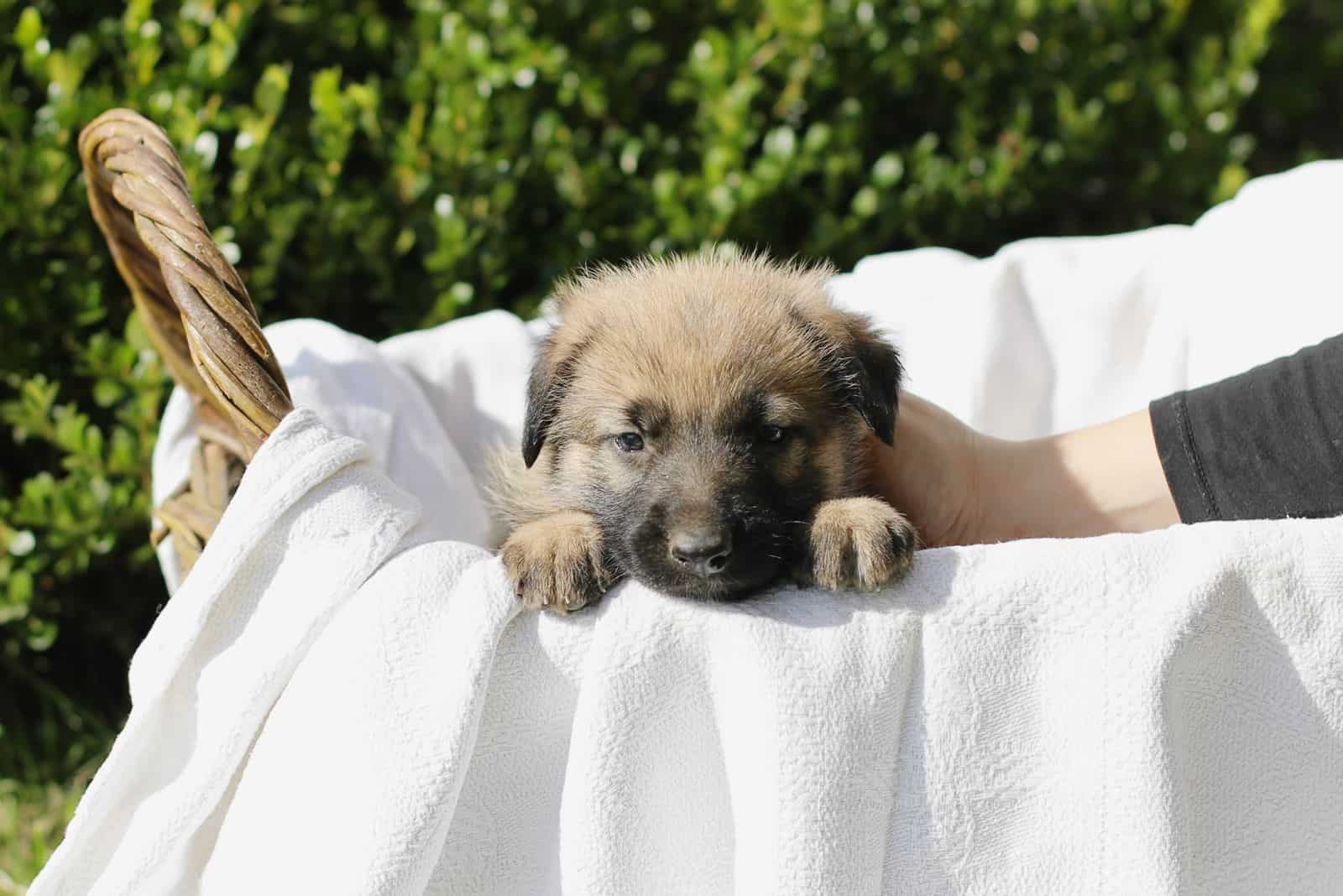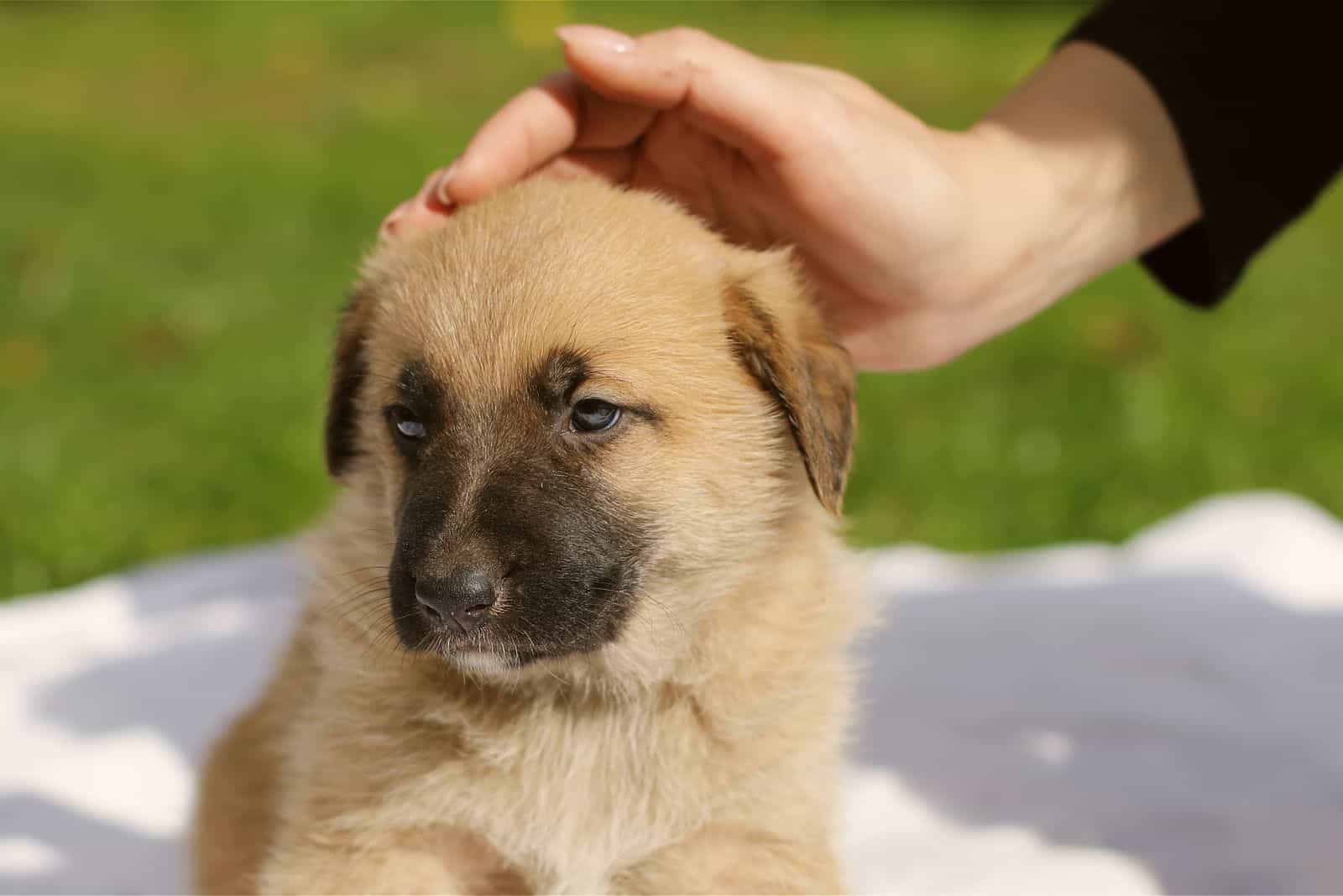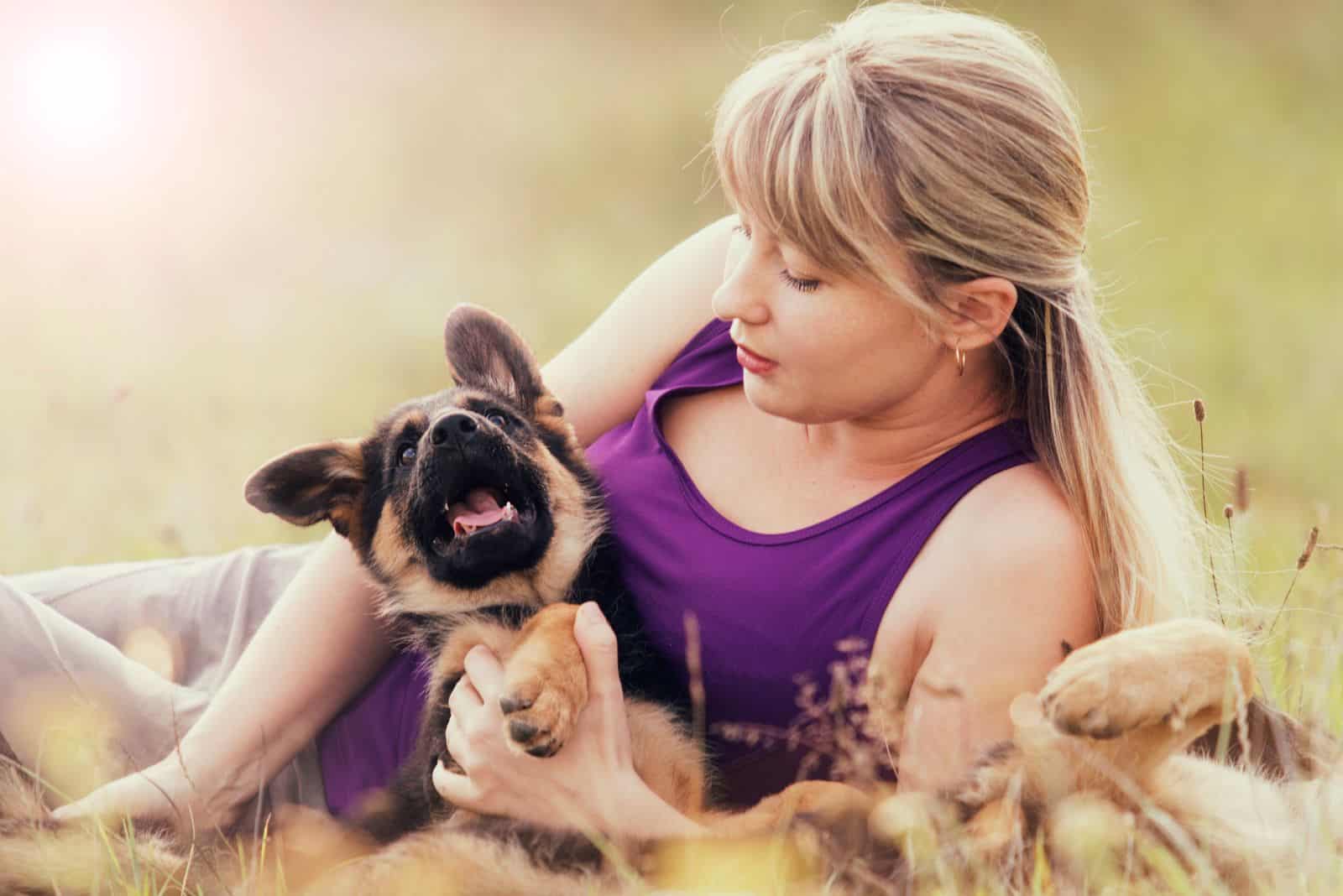There is nothing wrong with floppy ears. Still, you might be disappointed or surprised that your purebred German shepherd has floppy ears at six or seven months old.
You probably watched pictures and videos online showing how the floppers turn into amazing upright ears that give it that distinct GSD look. Comparing your puppy with the abundance of other people’s puppies online, you might decide to do something about the ears.
While the majority of it has to do with genetics, there are a few things to “train” the ears to stay upright once the puppy grows to be an adult. Here are five things I found work great to give your GSD pup’s ears a push.
1. Pet Your GSD’s Head The Right Way – Ear-resistible Massage

There is such a thing as petting the right way. If you like to go crazy with your hand petting the top of the head and ears in all possible directions, don’t. While the puppy’s ears are developing, the cartilage in it is still soft.
Flexing the ears too much in the wrong way can be detrimental to proper ear posture. Make sure your hand favors the ears naturally folding to the back. Don’t be too rough while doing it either.
A gentle massage where you gently pinch and roll the edges of the ears between your fingers can help promote good blood circulation and relaxation in your puppy.
2. Hairy Ears Fall Flat
This is not the case too often, but a German shepherd puppy’s ear can be affected by the weight of the hairs on it. This is especially true after intense playtime around water or mud.
The weight of the ear itself is enough to fold a GSD puppy’s satellites. If it’s extra-hairy, your pup might benefit from a trip to the groomer.
You can try to cut the hair yourself, but in most situations, it’s best that you give the reins to a professional. If you do decide to take a DIY approach, be gentle and calm. Some dogs don’t react well to hair-cutting tools, so make sure the pup will not overreact to getting a trim.
The hair you want to target is the fluff around the upper portion of the ear. Don’t cut the hairs that grow from within the ear. Only trim around the edges of the outer ear.
Keep in mind that, despite being a “thing to do”, I don’t recommend it. In addition to being a rare occurrence for puppies to have floppy ears due to excess hairs on the ear, it can have negative effects on its communication and interaction with the world if you cut too much.
3. Ears-ercise Is More Than Exercise

Playing games that stimulate ear movement will be an excellent workout for those 18 muscles found in a dog’s ear [1]. Just like most muscles in a dog’s body, making them work will increase strength and mobility.
You can use a squeaky toy and put it right above their ears, so that they have to perk them up to hear the sound. It will also make them lift the nose up, levelling those ears with a little help from gravity.
Although the ear cartilage and muscles are the main actors in upright ears, the jaw muscles are very important too. A strong base for the ears means better support in the higher places.
Chew toys that are not easily destroyed and chewy food or treats will get the jaw working hard, so try this trick as well.
4. Treats Are Food For The Ears
German shepherd puppies have a very strong food drive. Growing dogs are always hungry, so why not put that appetite to good use.
Ears-ercise can be seamlessly incorporated into obedience training and combined with food. Teaching your dog to sit is a great example of food-motivated ears-ercise because you have to put the treat above its head to get the butt down.
This will engage the ear muscles to locate your voice, while the pup tries to reach the treat in your hand. Again, gravity will unfold those ears, basically conditioning them to “remember” the position.
Another fun activity is teaching your dog to heel. It is incredibly important for a German shepherd to know how to heel, so why not start early if you haven’t already. You’re hitting two birds with one stone here.
5. Taping The Ears

If you bought a purebred German shepherd that seems to have trouble springing those ears up, then its genetics might be weaker. You should definitely let the breeder you bought it from know about the “weak” ears.
The other scenario might be an adopted rescue. If it’s a mixed breed, then there is not much you can do to get the ears to stay upright. If it’s purebred, you might have some success by taping the ears, though.
This is a harmless and painless way to prop the ears up. One of the more reputable training websites and forums, Leerburg, suggests the following way to tape GSD ears:
- Taping the ears has to be done between the fifth and sixth month of age.
- Use white surgical tape and the foam from hair rollers.
- Put the foam at the base of the inner part of the ear and wrap the ear around it with the tape holding the two tightly together.
- A popsicle stick in a horizontal position should be place on the top part of the ear (the folding one). It should connect the two ears so that they are equally propped up.
- Whenever your GSD puppy messes up the tape (it can happen daily at the beginning), you should re-tape the ears.
- Once one taping can hold for seven days, you should re-tape once a week.
Keep in mind that, according to the same Leerburg article mentioned above, there is a time window that will see your GSD puppy’s ears remain erect. If they’re still floppy after seven or eight months of age, that’s it.
In case you would like to see how it is done and what progress to expect, this YouTube video will help with that.
Other, More Complex Ways That Deserve A Mention
Giving the ears time to assume their upright position is fine. However, if your GSD pup is past the seven to eight months age, there are fewer viable options.
One thing to do is surgical implants. Personally, I wouldn’t consider this options as it is simply cosmetic surgery at this point. Maybe you feel scammed by the breed, but your dog shouldn’t be at the sharp end of the stick.
Another method is gluing. It is somewhat similar to taping, but much more messy and used very rarely.
My Two Cents On Upright GSD Ears
You are better of just accepting the fact that your GSD will have some flop in their ears. You might not be able to win any conformation events, but you will finally find some peace.
Not only that, but you can’t work against genetics. If you got your German shepherd from a reputable breeder, then it is worth giving them a call or paying them a visit. Express your concerns, but do not expect much.
Although the upright ear position is a German shepherd standard, the relationship between you and your dog overrules any ear shape or position. My advice is to try the five things I covered in the article. If they don’t work, just go with the flow.
References:
[1] Cole, L. K. (2009). Anatomy and physiology of the canine ear. Veterinary Dermatology, 20(5-6), 412–421. https://doi.org/10.1111/j.1365-3164.2009.00849.x
